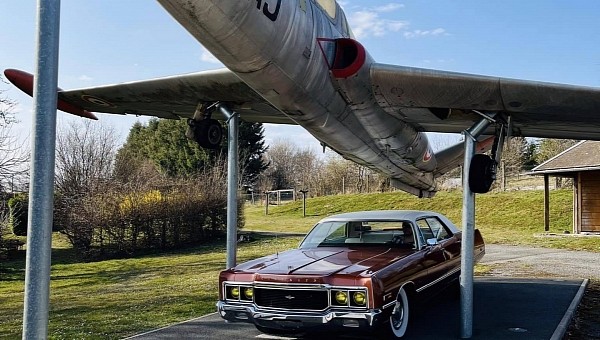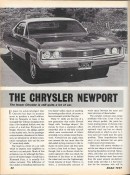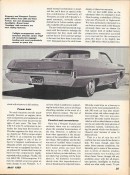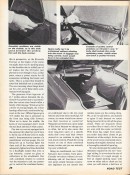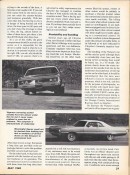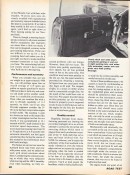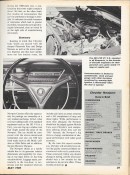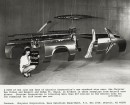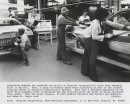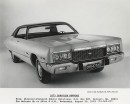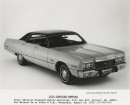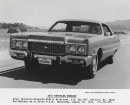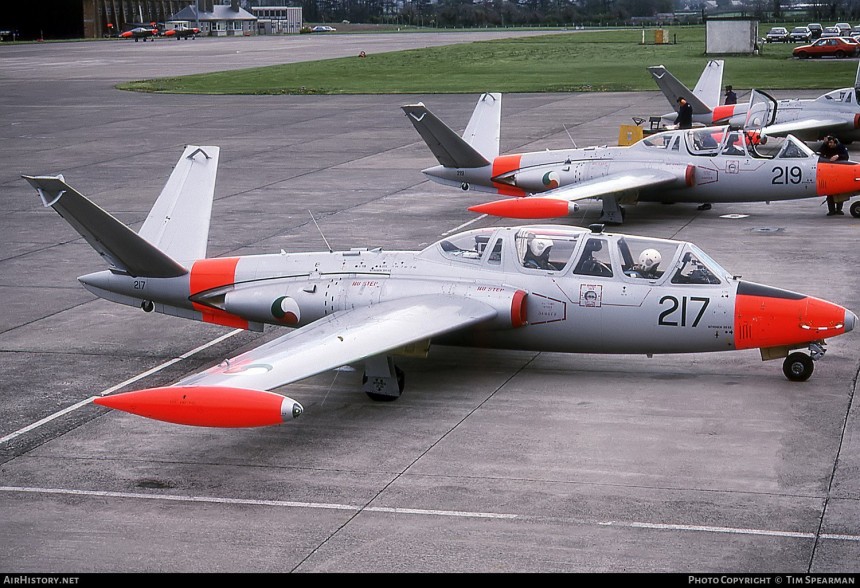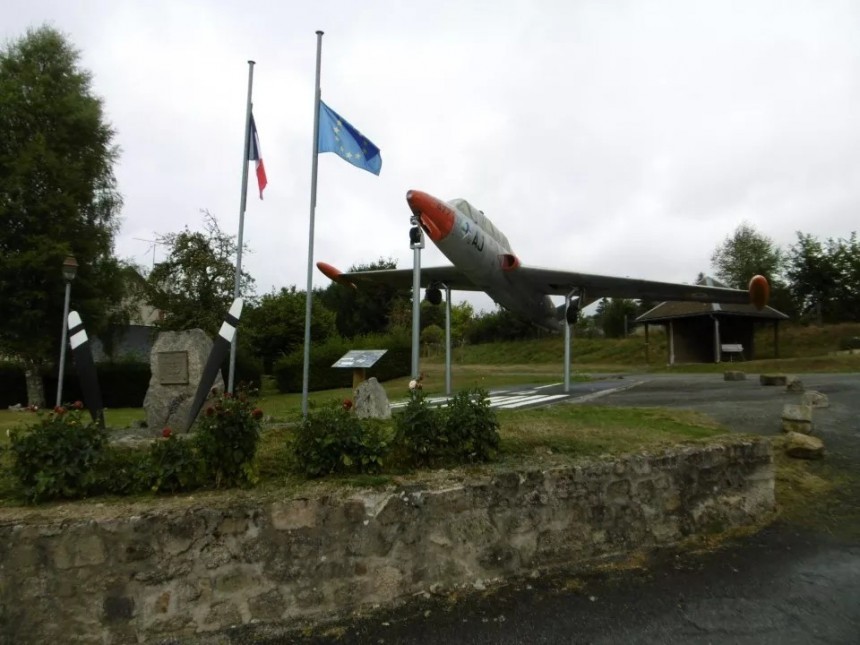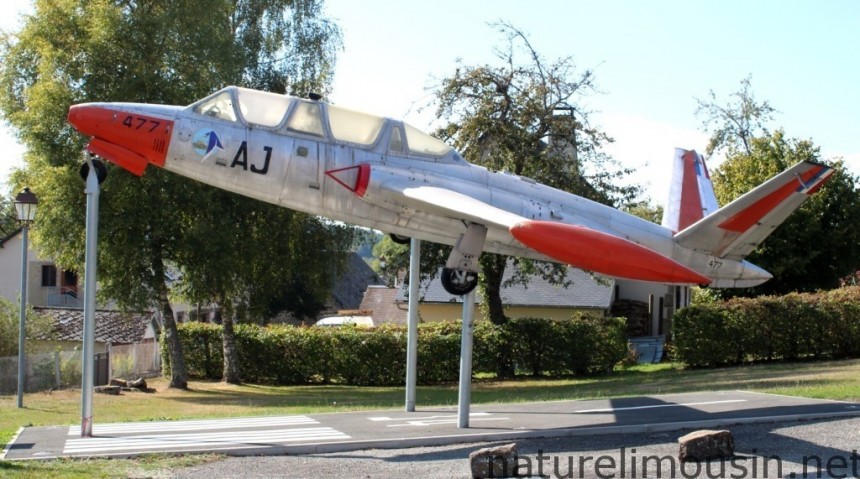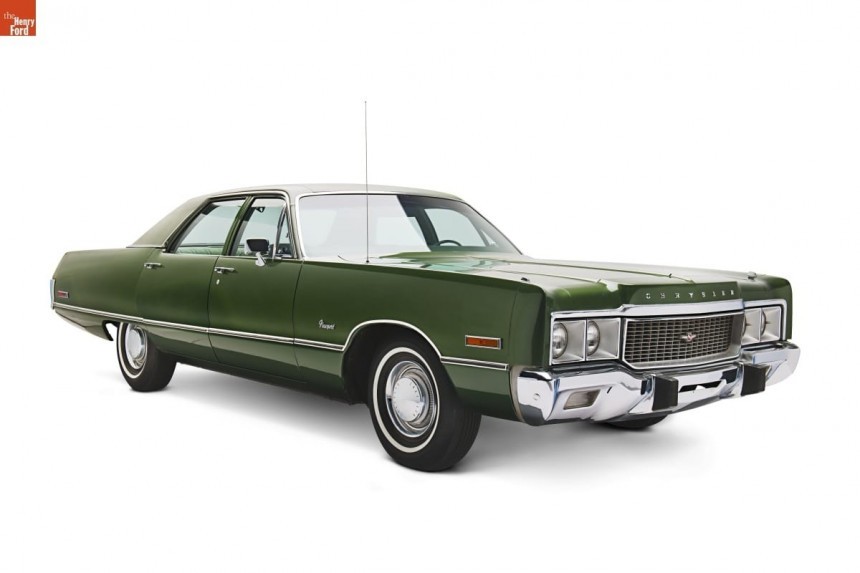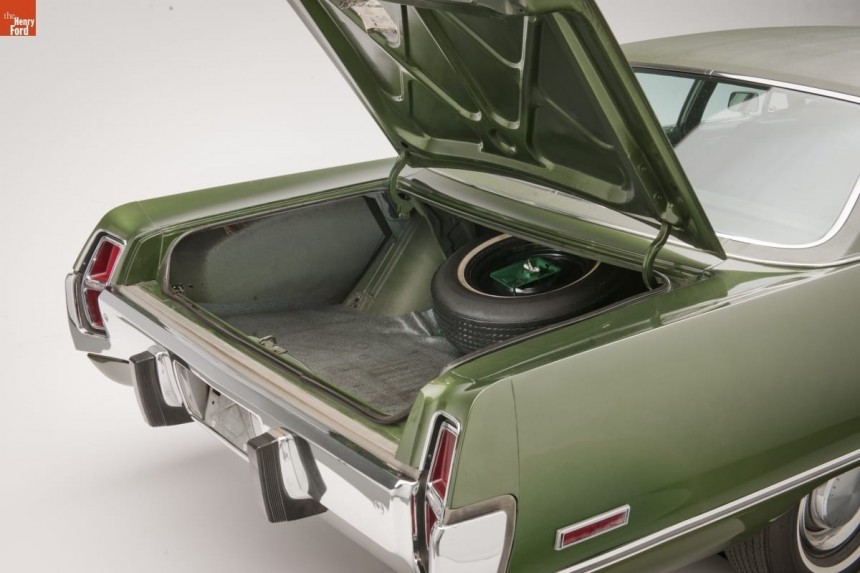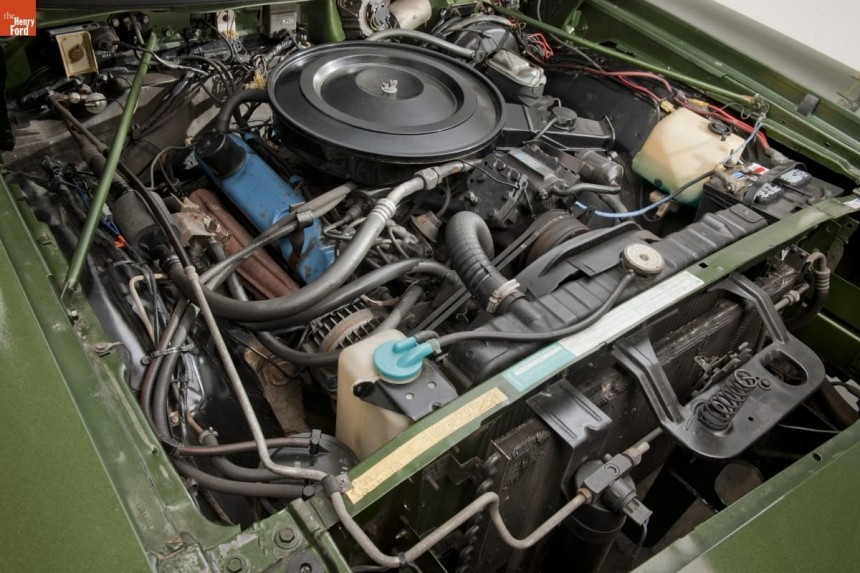Name a more unlikely duo than what you see in the main photo of this article. I will only give you some information about this photo and challenge you to a test. Can you name that car in the picture? A little insight into the airplane first, but here's a hint: the automobile wears the Fuselage Styling that drew inspiration from the world of streamlined jet aviation.
The photo was taken in France and posted on a French Facebook page full of awkward, out-of-the-ordinary, non-mainstream aviation photos and ideas. Still, of all the places to find an iconic American automobile, the European country is probably not among the first five on a gearhead's list.
Although the date is not specified, a time frame is available – sometime between the summer of 2016 and today. 2016 was the year when the monument was "decorated" with the suspended jet. The aircraft is part of a memorial monument in the commune of Féniers, in Central France, dedicated to French and Allied aviators that served between 1940 and 1945.
A keen eye makes no mistake in identifying this airplane for what it is – a jet – so it did not see action in WWII. Nonetheless, the badge of honor of this flying machine is adorned with wartime decorations, as the Fouga CM.170 Magister saw plenty of combat missions in Africa and the Middle East.
Primarily designed as a trainer jet in the late '50s and early '60s, the Fouga Magister was a twin-engine airplane that offered the best of both worlds. Simple enough to train pilots in the art of turbofan-powered aircraft and also battle-worthy rugged.
The two-seater is easily identifiable by its butterfly vertical stabilizers (the V-tail shape is unmistakable, and it saw fame with the F-117 Nighthawk). A notable feature is its straight wing profile – an early concept in the subsonic jet-engined age of aviation.
Later models would obey the basic principles of supersonics and opt for a rearward-swept wing. There are notable exceptions to this general rule, such as the Grumman X-29 NASA test bed or the Soviet-designed Sukhoi Su-47.
The Fouga Magister was built to train basic- and intermediate-difficulty jet piloting skills, so its design paid close attention to simplicity in operation. To give a perspective of how brilliantly the engineering of this airplane was, note that both engines could be replaced in 45 minutes.
The Turbomeca Marboré IIA turbojets could produce 880 lbf (3.9 kN) each. Enough for a rate of climb of 3,345 ft/min – 17 m/s (without its signature tip fuel tanks installed). The plane could take its crew of two – pilot and instructor – to a maximum altitude of 36,000 feet (11,000 meters) and reach a top speed of 386 kts (444 mph, or 715 kph) at 30,000 feet – nine kilometers up in the air.
The trainer/fighter could stay airborne for 160 minutes – with the external tanks mounted, carrying 260 gallons of fuel – 980 liters. Its compact size meant a relatively low weight: 2.1 tons empty and a max takeoff mass of 3.2 tons.
33 feet long, just nine feet tall, and almost forty feet from wingtip to wingtip, the trainer could carry a pair of small-caliber machine guns (7.62 mm), with 200 rounds for each. The twin underwing hardpoints allowed the Fouga to take off with 310 lb of weapons (140 kg) – bombs, unguided rockets, or anti-tank missiles.
929 units were built between 1952 and 1967 in four countries. Most Fougas were assembled in France, with Germany, Israel, and Finland serving as the other manufacturing licensees.
On the other hand, the car in the photo is as American as it comes, born in the turmoil years that marked the end of the Golden Age. During its two-decade production run, this car was one of the Big Three's workhorses.
A proper land yacht – 230 inches long (5.84 meters), 124 inches between the axles (3.15 meters) - this Mopar perfectly embodies the "Bigger is better" philosophy that captured the automotive spirits of Detroit in the '70s.
This 1973 Chrysler Newport flared its massiveness without restraint – the "Fuselage Styling" introduced in 1969 put its mark on all of the carmaker's models until the end of 1973. The car suffered the same performance-gutting engine undermining from federal emissions regulations. The 400 CID pushrod V8 (6.6-liter) would meagerly deliver 185 hp (188 PS) on premium gasoline.
The 310 lb-ft/420 Nm of torque wasn't impressive either. The mid-and late-seventies were a space-wasting era for the automotive world, with cars and engines getting larger and larger, but free-falling in practicality.
The gallery includes a comprehensive overview of the 1969 Chrysler Newport by Road Test Magazine – go down from where they left off, and you get a pretty clear picture of what the 1973 model was. It had real-estate levels of space, thanks to the "long hood, long deck" styling.
It wasted copious amounts of that space and still had enough room for its occupants to consider sending letters to each other while on a road trip. This is metaphorical, but the '73 Newport was massive. 4,200 lb were a lot of Chrysler - 1.9 tons, just 400 lb (some 180 kg) less than the Fouga Magister jet.
Sure, the power steering came in handy – almost too handy. It was so precisely machined that it left little room for slack, and the driver had to make constant subtle adjustments. Chrysler's TorqueFlite three-speed automatic gearbox, coupled with the 2.76 rear-end (or the optional 3.23) gave very little performance. Then again, the full-sized Newport wasn't the drag strip type.
On the interior, the Newport was very discreet in terms of visual elements. The speedometer, fuel level, and chronometer were the only available dials - the photos in the gallery prove it. Everything else was conveyed to the driver via warning lights. Because the car was 79 inches wide (a full two meters), the glove box was outside the reach of average-sized drivers.
More than 154,000 units were built in 1973, and one of those – a four-door sedan – somehow found its way to France, sheltering from the sun under an old, decommissioned French jet. Despite being advertised as a premium automobile (watch the video to see how MoPar announced it), the Newport was at the bottom of the luxury food chain. Its identical twin, the much more famous New Yorker, and the Imperial were prized – and priced – way above the Newport's head.
Although the date is not specified, a time frame is available – sometime between the summer of 2016 and today. 2016 was the year when the monument was "decorated" with the suspended jet. The aircraft is part of a memorial monument in the commune of Féniers, in Central France, dedicated to French and Allied aviators that served between 1940 and 1945.
A keen eye makes no mistake in identifying this airplane for what it is – a jet – so it did not see action in WWII. Nonetheless, the badge of honor of this flying machine is adorned with wartime decorations, as the Fouga CM.170 Magister saw plenty of combat missions in Africa and the Middle East.
The two-seater is easily identifiable by its butterfly vertical stabilizers (the V-tail shape is unmistakable, and it saw fame with the F-117 Nighthawk). A notable feature is its straight wing profile – an early concept in the subsonic jet-engined age of aviation.
Later models would obey the basic principles of supersonics and opt for a rearward-swept wing. There are notable exceptions to this general rule, such as the Grumman X-29 NASA test bed or the Soviet-designed Sukhoi Su-47.
The Turbomeca Marboré IIA turbojets could produce 880 lbf (3.9 kN) each. Enough for a rate of climb of 3,345 ft/min – 17 m/s (without its signature tip fuel tanks installed). The plane could take its crew of two – pilot and instructor – to a maximum altitude of 36,000 feet (11,000 meters) and reach a top speed of 386 kts (444 mph, or 715 kph) at 30,000 feet – nine kilometers up in the air.
The trainer/fighter could stay airborne for 160 minutes – with the external tanks mounted, carrying 260 gallons of fuel – 980 liters. Its compact size meant a relatively low weight: 2.1 tons empty and a max takeoff mass of 3.2 tons.
929 units were built between 1952 and 1967 in four countries. Most Fougas were assembled in France, with Germany, Israel, and Finland serving as the other manufacturing licensees.
On the other hand, the car in the photo is as American as it comes, born in the turmoil years that marked the end of the Golden Age. During its two-decade production run, this car was one of the Big Three's workhorses.
This 1973 Chrysler Newport flared its massiveness without restraint – the "Fuselage Styling" introduced in 1969 put its mark on all of the carmaker's models until the end of 1973. The car suffered the same performance-gutting engine undermining from federal emissions regulations. The 400 CID pushrod V8 (6.6-liter) would meagerly deliver 185 hp (188 PS) on premium gasoline.
The 310 lb-ft/420 Nm of torque wasn't impressive either. The mid-and late-seventies were a space-wasting era for the automotive world, with cars and engines getting larger and larger, but free-falling in practicality.
It wasted copious amounts of that space and still had enough room for its occupants to consider sending letters to each other while on a road trip. This is metaphorical, but the '73 Newport was massive. 4,200 lb were a lot of Chrysler - 1.9 tons, just 400 lb (some 180 kg) less than the Fouga Magister jet.
Sure, the power steering came in handy – almost too handy. It was so precisely machined that it left little room for slack, and the driver had to make constant subtle adjustments. Chrysler's TorqueFlite three-speed automatic gearbox, coupled with the 2.76 rear-end (or the optional 3.23) gave very little performance. Then again, the full-sized Newport wasn't the drag strip type.
On the interior, the Newport was very discreet in terms of visual elements. The speedometer, fuel level, and chronometer were the only available dials - the photos in the gallery prove it. Everything else was conveyed to the driver via warning lights. Because the car was 79 inches wide (a full two meters), the glove box was outside the reach of average-sized drivers.
More than 154,000 units were built in 1973, and one of those – a four-door sedan – somehow found its way to France, sheltering from the sun under an old, decommissioned French jet. Despite being advertised as a premium automobile (watch the video to see how MoPar announced it), the Newport was at the bottom of the luxury food chain. Its identical twin, the much more famous New Yorker, and the Imperial were prized – and priced – way above the Newport's head.
